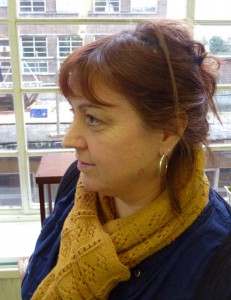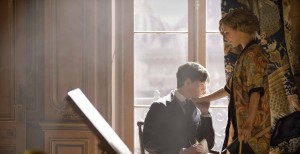![]()

“The story for me is always the most important thing,” said Stewart. “I love to tell real people stories and try to show how they affect other people.” Working with Redmayne was also an attraction. “I’ve worked with him once before and I was aware of how meticulous he is to create his character.” Another appeal laid in getting the chance to show this particular period of European history in two ways. “One was to show the world of Copenhagen which was quite restrictive, quite traditional, as opposed to the explosion of art at the time in Paris.”

Stewart began this process with character-based research before moving on to the architecture of the time. Because this was a story about painters, she looked at the paintings of different artists and their renderings of architecture and used their interpretations more than archives of images she would normally have used. Even the color palette was inspired by the art she studied. “In the beginning they were taken from Einar’s paintings, which were quite traditional. They were often landscapes, so we took the colors from that to express the world they’re living in,” Stewart said. As Einar progressed in the transformation to Lili, the world suddenly exploded into pinks, apricots and golds.
There were some logistical challenges in creating this world and one of them was just the difficulties that arise with travel. “We had a very short shoot and so we were getting around Europe to take advantage of some really amazing locations,” Stewart said. The Paris apartment and the main flat in Copenhagen was built, so there would be no restrictions in shooting but besides those two scenarios all the other locations had to be travelled to in Europe.
There were a couple of scenes that Stewart worked on that were especially noteworthy to her because of the effort it took to make them happen and their creativity. “Number one, I really loved working on the harbor in Copenhagen because it took such a long time, but it was real joy to sway all the Danish fishermen who had period fishing boats to sail them into the harbor at the same time. That was really exciting to get all that together. And the other one is the backstage scene where I put all the tutus on the ceiling because I had seen something in Paris like that. I got really exciting about shooting through tutus,” she explained.





